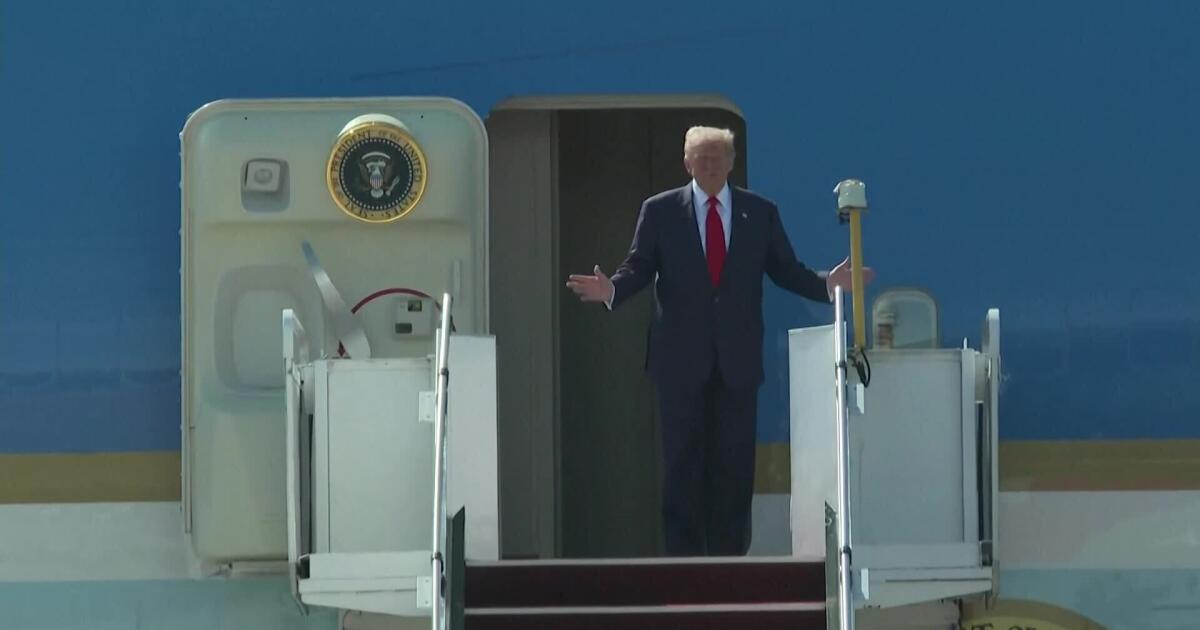U.S., China reach tentative trade deal at Asia summit
Top trade negotiators for the U.S. and China said they came to terms on a range of contentious points, setting the table for Presidents Trump and Xi Jinping to finalize a deal and ease trade tensions that have rattled global markets.
After two days of talks in Malaysia wrapped up Sunday, a Chinese official said the two sides reached a preliminary consensus on topics including export controls, fentanyl and shipping levies.
U.S. Treasury Secretary Scott Bessent, speaking later in an interview with CBS News, said Trump’s threat of 100% tariffs on Chinese goods “is effectively off the table” and he expected Beijing to make “substantial” soybean purchases as well as offer a deferral on sweeping rare-earth controls. The U.S. wouldn’t change its export controls directed at China, he added.
“So I would expect that the threat of the 100% has gone away, as has the threat of the immediate imposition of the Chinese initiating a worldwide export control regime,” Bessent said. He separately told ABC News he believed China would delay its rare-earth restrictions “for a year while they reexamine it.”
Bessent telegraphed a wide-ranging agreement between Trump and Xi that would extend a tariff truce, resolve differences over the sale of TikTok and keep up the flow of rare-earth magnets necessary for the production of advanced products from semiconductors to jet engines. The two leaders are also planning to discuss a global peace plan, he said, after Trump said publicly he hoped to enlist Xi’s help in ending Russia’s war in Ukraine.
The encouraging signals from both sides of the negotiations were a marked contrast from recent weeks, when Beijing’s announcement of new export restrictions and Trump’s reciprocal threat of staggering new tariffs threatened to plunge the world’s two largest economies back into an all-out trade war.
Staving off China’s rare-earth restrictions is “one of the major objectives of these talks, and I think we’re progressing toward that goal very well,” U.S .Trade Representative Jamieson Greer said on “Fox News Sunday.”
Trump predicted a “good deal with China” as he spoke with reporters on the sidelines of the Assn. of Southeast Asian Nations summit in Kuala Lumpur, the Malaysian capital, saying he expected high-level follow-up meetings in China and the U.S.
“They want to make a deal, and we want to make a deal,” Trump said.
Still, markets will be closely watching the details of the ultimate agreement, after nearly a year of head-spinning changes to trade and tariff policies between Washington and Beijing.
Chinese trade envoy Li Chenggang said he believes that the sides had reached consensus on fentanyl — suggesting the U.S. might lift or reduce a 20% tariff it had imposed to pressure Beijing to halt the flow of precursor chemicals used to make the deadly drug. He said the nations would also address actions the Trump administration took to impose port service fees on Chinese vessels, which prompted Beijing to put retaliatory levies on U.S.-owned, -operated, -built or -flagged vessels.
Li, whom Bessent called “unhinged” just days ago, described the talks as intense and the U.S. position as tough, but hailed the signs of progress. Both sides will now brief their leaders ahead of a planned summit between Trump and Xi on Thursday.
“The current turbulences and twists and turns are ones that we do not wish to see,” Li told reporters, adding that a stable China-U.S. trade and economic relationship is good for both countries and the rest of the world.
The reopening of soybean purchases, if realized, could provide a significant political win for Trump.
China imposed retaliatory tariffs on U.S. farm goods in March, effectively slamming the door shut on American soybeans before the harvest even began. The Asian nation last year purchased $13 billion in U.S. beans — more than 20% of the entire crop — for animal feed and cooking oil, and the freeze has rocked rural farmers who represent a key political base for the president.
Perhaps more important is resolving the the U.S.’ rare-earths tussle with China, which fought back against Trump’s trade offensive earlier this year by cutting off supplies of the materials. Although flows were restored in a truce that saw tariffs lowered from levels exceeding 100%, China this month broadened export curbs on the materials after the U.S. expanded restrictions on Chinese companies.
The negotiations took place at the skyscraper Merdeka 118 as Trump met with Southeast Asian leaders at a nearby convention center, where he discussed a series of other framework trade agreements, seeking to diversify U.S. trade away from China.
The Chinese delegation was led by He, China’s top economic official, and included Vice Finance Minister Liao Min. Greer, the U.S. trade representative, was also part of the talks.
Trump’s meeting with Xi this week will be their first face-to-face sit-down since his return to the White House. The U.S. leader has said direct talks are the best way to resolve issues including tariffs, export curbs, agricultural purchases, fentanyl trafficking and geopolitical tinderboxes such as Taiwan and the war in Ukraine.
“We’ll be talking about a lot of things,” he said. “I think we have a really good chance of making a very comprehensive deal.”
Flatly and Xiao write for Bloomberg. Bloomberg writers Sam Kim and Tony Czuczka contributed to this report.

